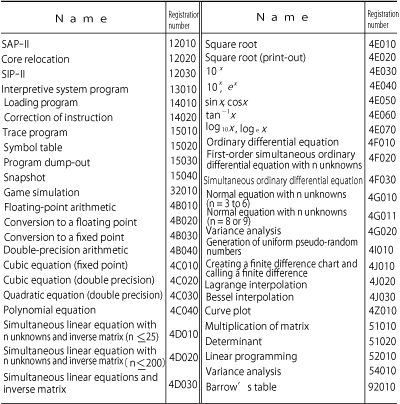In the era of early computers such as HIPAC 101, HITAC 301 and HIPAC 103, operating systems which control the whole computer did not exist. In those days, we only had programs that performed individual processing tasks, such as symbol input routines and interpreters. Symbol input routines converted programs into machine languages by inputting them from punch cards or paper tapes, and interpreters executed pseudo-instructions held in the storage while converting them into machine languages.
With HITAC 301, for example, if a program written on a paper tape was input, a symbol input program called SIP converted it into a machine language and stored the result in storage. When SIP completed processing of the final instruction, the computer would temporarily stop running. So, the user had to press the start button to execute the program. This meant that the computer was controlled through human intervention.
HIPAC 101, announced in 1958, was shown at a computer exhibition organized by UNESCO in June 1959, in Paris, and shipping began in July 1960. HITAC 301, Hitachi’s first transistor-based computer, was delivered to Japanese Electronic Industry Development Association in May 1959. HIPAC 103 was a parametron computer developed for scientific and engineering computation. The first model was delivered to Kansai Electric Power in December 1961.
Table 1 shows the system software for HIPAC 101, HITAC 301 and HIPAC 103.
| Model | System software |
|---|---|
| HIPAC 101 | HISIP 101: symbol input routine |
| HITAC 301 |
|
| HIPAC 103 |
|
Table 2 shows a list of major library programs for HITAC 301. The program library for HITAC 301 was roughly divided into six types of programs: system program, business computation practical program, engineering computation program, subroutine for engineering computation, engineering computation utility routine, and programs for education and demonstration. These programs were further subdivided and organized into middle classes and small classes.


